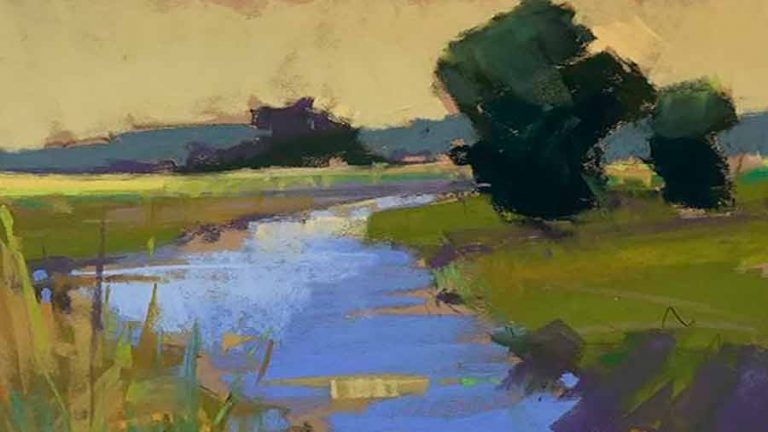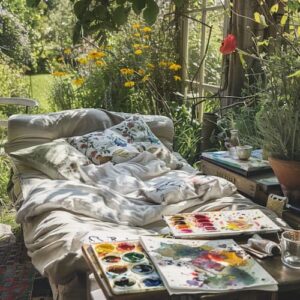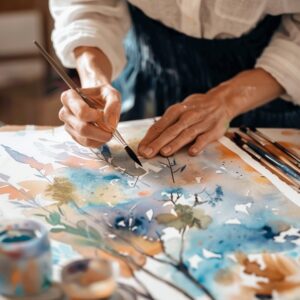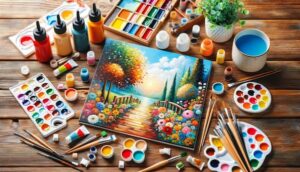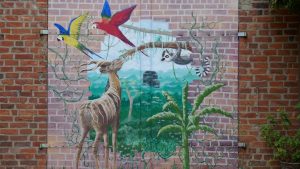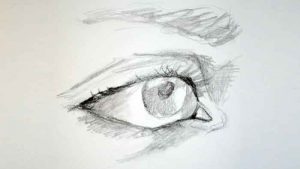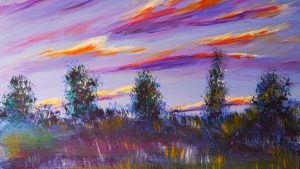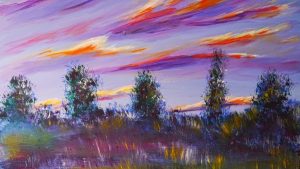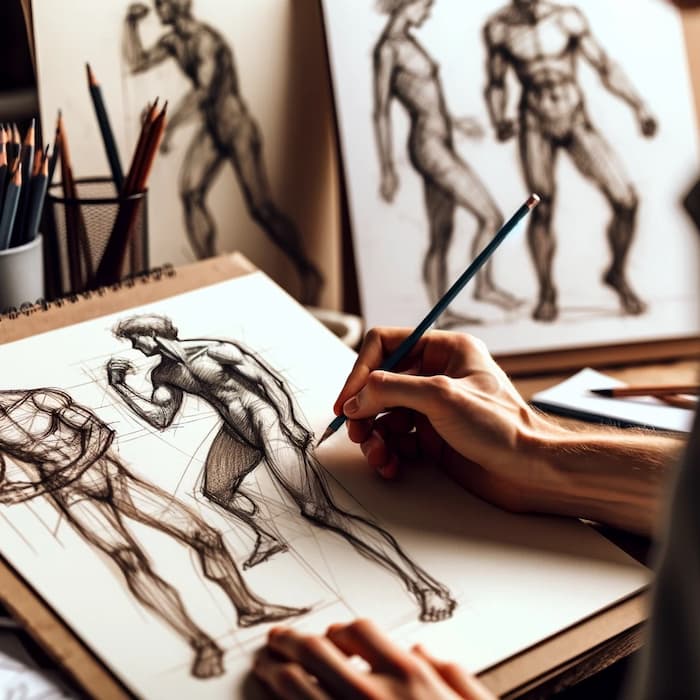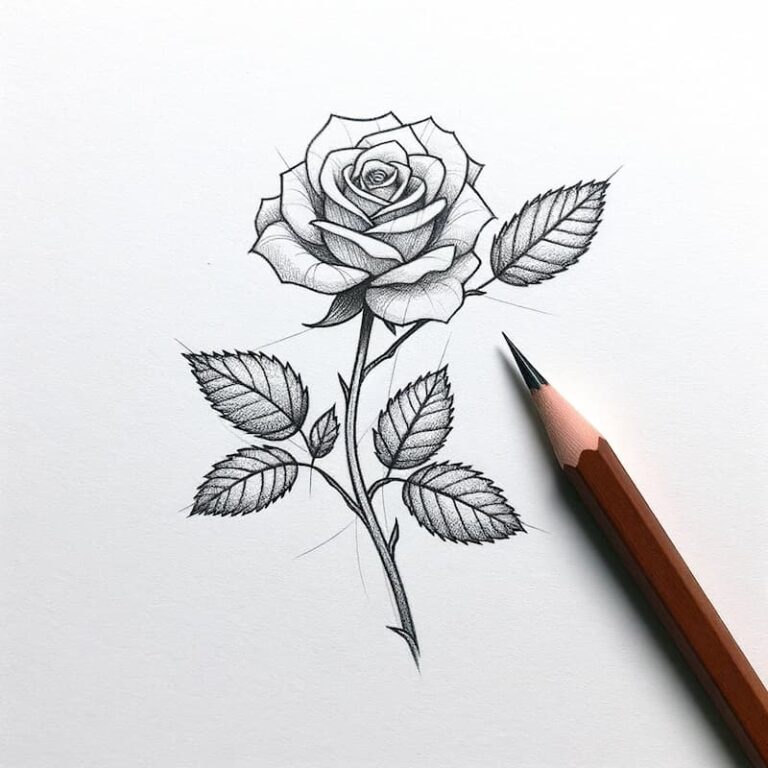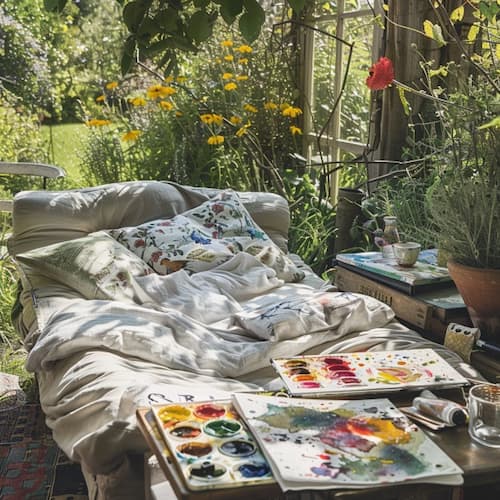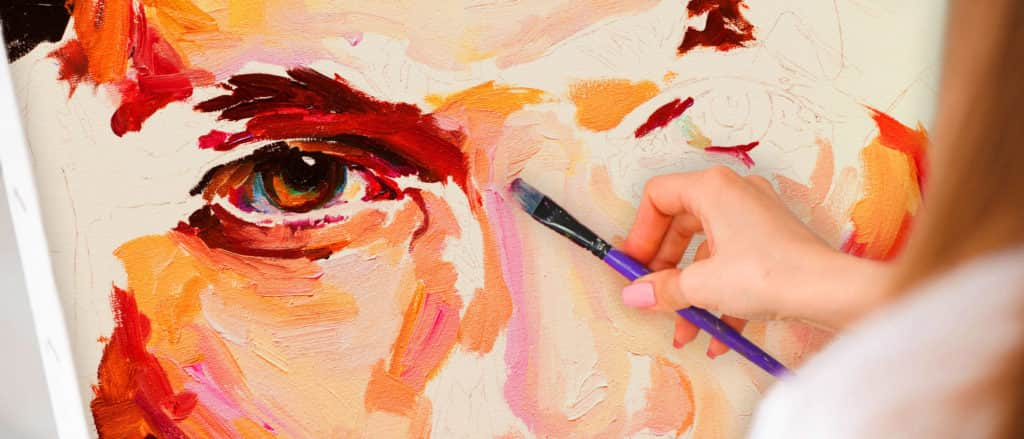Hello, Artenauta! When we are beginners, it is normal that many doubts arise when choosing an image to paint. Landscape is a more friendly subject for those who are just starting out in painting, but it is not without its difficulties, especially if the image we have chosen is too complex.
This is not always easy to detect, and it is common that we make a mistake and choose our model thinking that it will be easy to get good results, but when we get down to work we realize that it was much more complex than it seemed and we get discouraged; that is why these tips for choosing landscapes for oil painting will be useful.
What to consider when choosing landscapes for oil painting?
In this post we are going to give you a few tips to get it right when choosing our landscapes for oil painting and we will tell you the strategy to paint it.
So: What do I have to take into account when choosing a landscape that is easy for me as a beginner and still get a good result?
1 - That it has different depth planes
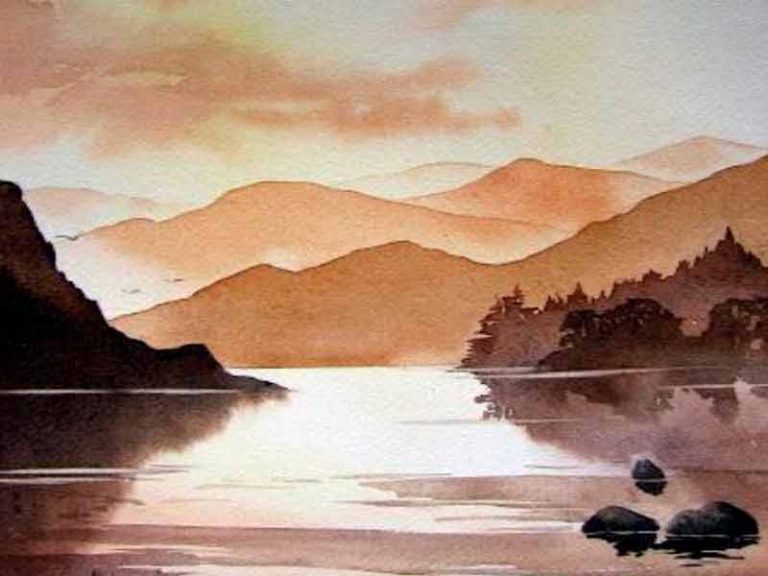
As objects move away from us, the more broken and pale tones in a landscape are perceived.
Working the different planes with the help of this effect will create a sensation of depth that our brain will interpret better. Moreover, if we enhance this resource, making the lower parts of each shot lighter than the upper ones, we will create a greater contrast in the overlapping and this depth will be even better understood.
2 - That the horizon line is not too low.
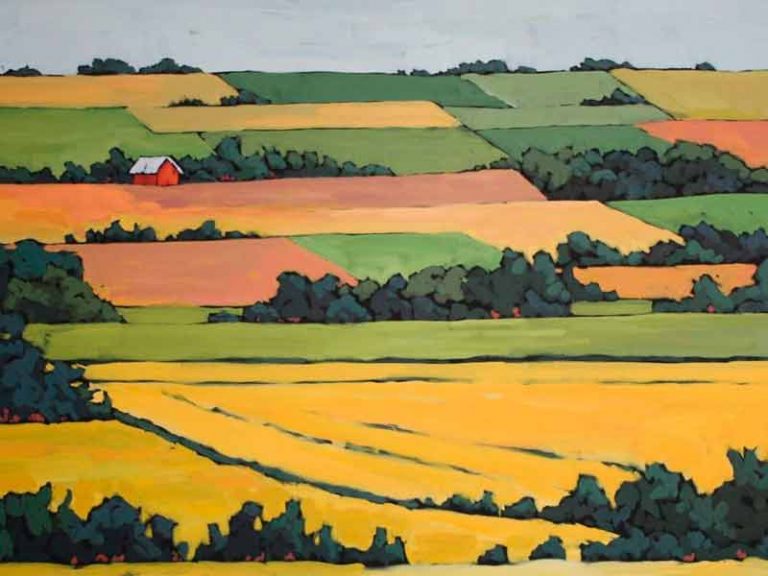
If we have not yet mastered painting, it is preferable to give more importance to the terrain than to the skies, because these need to be worked with great delicacy and ease to work well, and if we do not yet control the painting, we will be putting the focus on something we have not mastered.
The terrain has many variations and contrasts of tone, directions and brushstroke sizes, so it lends itself better to a prominence that does not give away so much of our initial inexperience.
3 - Predominance of horizontal lines.
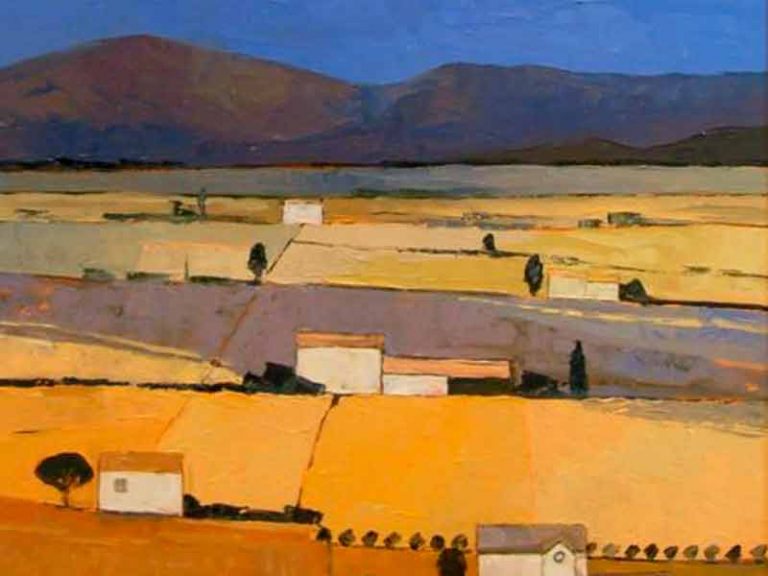
Landscapes with very steep mountains, with a lot of vertical vegetation or too many buildings are more complex to work with, among other things, because of the rules of perspective. When horizontal or diagonal lines predominate, we can manage better, taking into account the basic rules of perspective, which make the distant become crowded.
4 - Avoiding detailed vegetation in close-ups
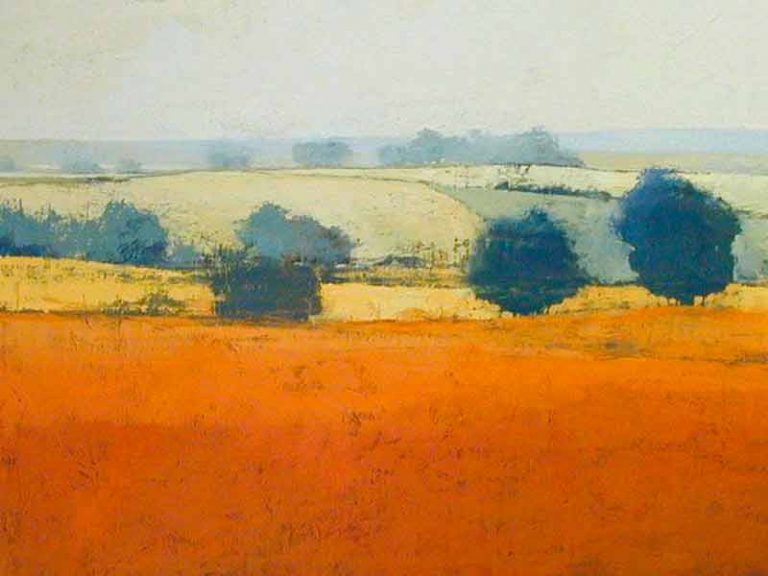
The distant vegetation can be summed up with a few casual, loose brushstrokes, playing with the right contrasts of light and color. But if we work with vegetation in close-ups, we will be obliged to do it in more detail or with great skill so that our work is not tarnished.
5 - Avoid images with many elements
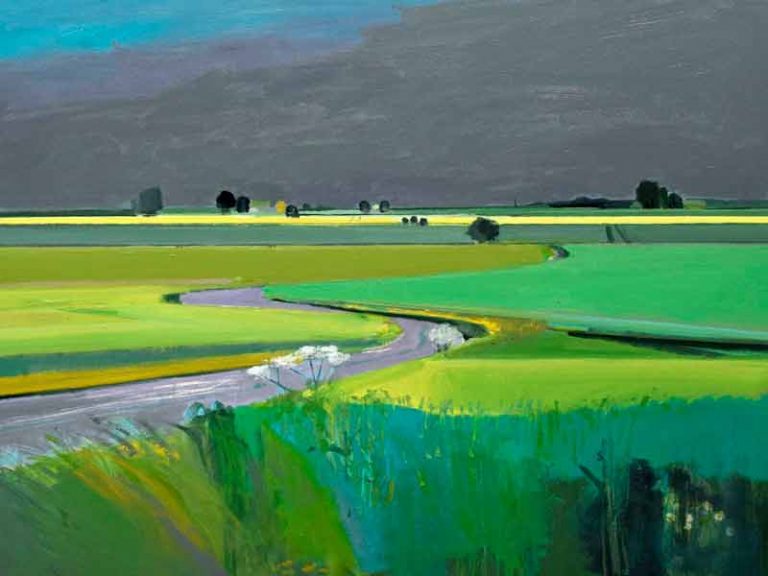
It may seem that the fewer elements we have to represent (trees, houses, mountains…), the easier it will be to paint a landscape. But be careful, if we have too few, we will have to work very hard to make our picture look interesting. Ideally, there should not be too many of them, but neither should the landscape be empty. Some vegetal or urban elements will help to focus the points of interest.
6 - Using large and medium brushes
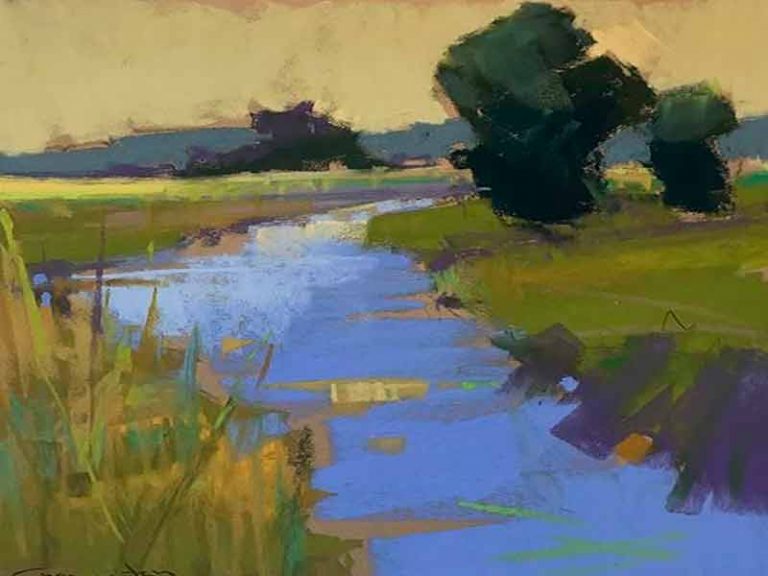
In landscape, there is nothing more hackneyed than an image worked with very small brushes when we are beginners. It is best to dare to use large flat brushes for the backgrounds, medium brushes for the general and, yes, some small brushes for more specific and detailed areas at the end.
7 - Avoid working in very small formats
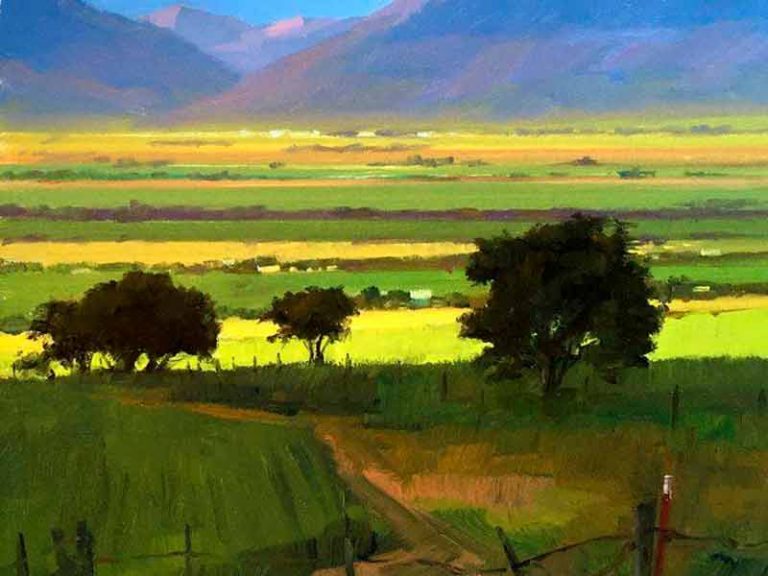
If we work with medium and large brushes, we will need medium or large brush holders to be able to work on details. Contrary to what it may seem, for simple landscapes, medium or large canvases tend to work best for the beginner.
8 - Respect the predominance of the color of the general light.
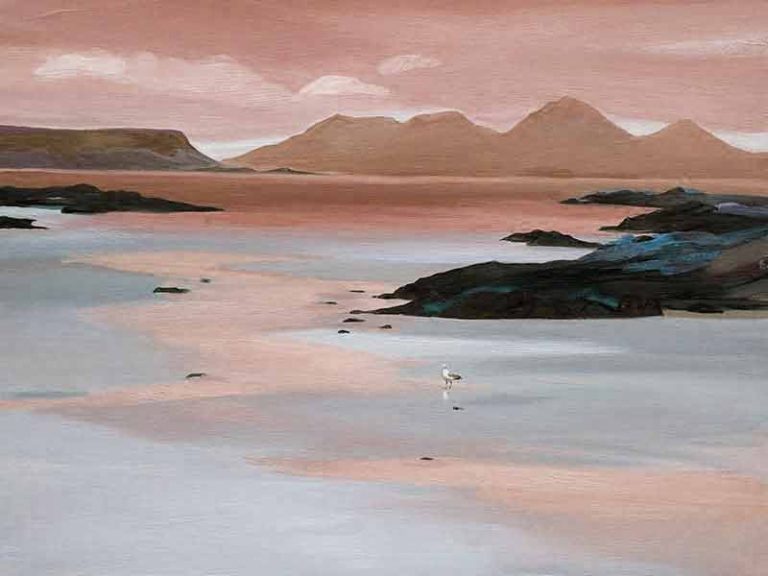
The sky and water are not always blue, just as the vegetation will not always look green or brown. We will have to study the color of the image according to the color of the light from the skies and make it dominant.
And, as always, we must remember that, in order to progress in our learning in a satisfactory way, it is very important to know in depth the materials we are going to work with and to develop a good base in drawing and in the theory and practice of color and light.
In this way, we will always be motivated to continue learning, improving in each work we do, and, above all, developing our analytical skills and our creativity.
So far our tips for choosing landscapes for oil painting, learn all this and much more in depth in our Oil Painting Course, where you can enjoy the path to become an artist in an entertaining way and at your own pace.
Join our Artenautas community!
Paint your first painting step-by-step with this FREE ebook
"How to paint in oils and not die trying."

